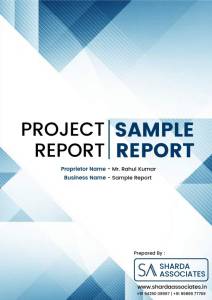Project Report For Rubber Rice Polisher
Introduction
Project report for Rubber rice polisher is as follows.
A rice huller, also known as a rice husker, is agricultural equipment that automates the process of removing the chaff from rice grains. There have been several methods for hulling rice throughout history.
Traditionally, it would be crushed using a mortar and pestle. A rice pounder was an early rudimentary contraption that did this. Later, more effective technology for hulling and polishing rice was invented.
These devices are most often created and utilised in Asia, where the Engelberg huller is the most prevalent form.
Rubber rollers can be used to prevent grain breakage and so increase the output of high-quality head rice, but they must be replaced on a regular basis, which can be a big disadvantage.
Rubber Rice Polishers, also known as Rubber Brakes, is used to polish rice in contemporary rice mill businesses.
These goods are in high demand in modern rice mill plants. The current rice mill idea has tremendously aided in the recovery of by-products, i.e. rice bran, as well as the ability to be economically sound.
All new plants have been erected to polish rice using this technology, and the yield of materials is rising at a pace of 5% each year.
Rice Rubber Polisher brakes are an essential component of the current rice milling business.
All rice mills require a big amount of rice rubber polisher sticks on a regular basis to polish rice.
Rice Rubber Polishers are rectangular-shaped long sticks manufactured mostly of natural rubber and Styrene-butadiene rubber as raw materials.
Large cones are used to polish the rice in older models of rice whitening machines, while additional side rice polishers are employed as brakes to prevent the rice from running out of the machine.
Market Potential Of Rubber Rice Polisher
According to a report by Market Research Future, the global rice polisher market is expected to grow at a CAGR of 5.2% from 2019 to 2025.
The market size of rubber rice polishers has been steadily growing over the years due to the increasing demand for polished rice, especially in the Asia-Pacific region, where rice is a staple food.
The Asia-Pacific region dominates the global rubber rice polisher market due to the high consumption of rice in the region. China and India are the two largest markets for rice polishers, followed by Japan, Indonesia, and Thailand.
In China, the demand for rubber rice polishers is driven by the country’s increasing population, urbanization, and changing dietary habits. India, on the other hand, is a major producer and exporter of rice, which contributes to the demand for rice polishers.
North America and Europe are also significant markets for rubber rice polishers, albeit to a lesser extent compared to the Asia-Pacific region.
The increasing demand for organic and whole-grain rice in these regions is expected to drive the market growth in the coming years.
The market for rubber rice polishers is highly competitive, with several key players operating in the market. Some of the major players in the market include Satake Corporation, Buhler AG, Mitsubishi Corporation, and SATAKE (THAILAND) CO., LTD.
In conclusion, the market size of rubber rice polishers is expected to continue to grow due to the increasing demand for polished rice, especially in the Asia-Pacific region. The increasing population, urbanization, and changing dietary habits are the key drivers of the market growth.
The market is highly competitive, with several key players operating in the market, and is expected to remain so in the foreseeable future
Project Report Sample On Rubber Rice Polisher
Need Help?
Create 100% Bankable Project Report

